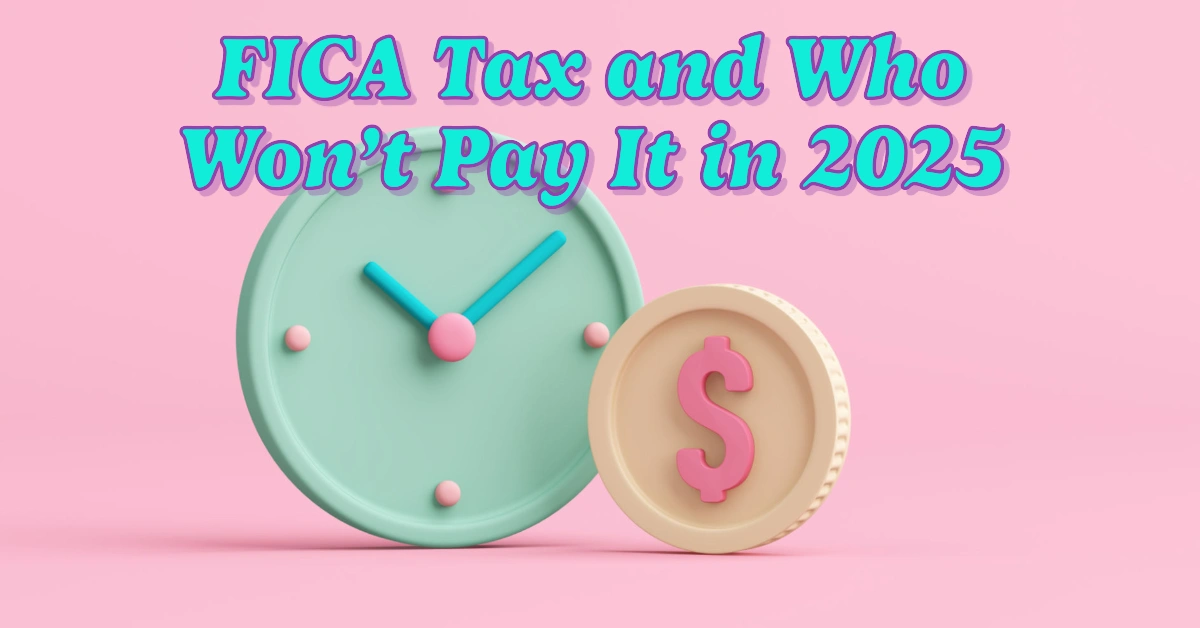
When U.S. employees check their paychecks, one deduction that often catches their attention is FICA. Short for the Federal Insurance Contributions Act, this tax funds two essential programs—Social Security and Medicare—which are the bedrock of America’s social safety net.
Table of Contents
While many workers may feel frustrated by the deduction, it’s an investment in long-term financial stability. Let’s explore what FICA is, how it works, and—most importantly—who won’t be paying it in 2025.
Breaking Down FICA: What Are You Paying For?
FICA consists of contributions to Social Security and Medicare, deducted from every employee’s paycheck. Here’s how it’s allocated:
- Social Security Tax (6.2%): This supports retirees, disabled individuals, and dependents of deceased workers.
- Medicare Tax (1.45%): Funds healthcare access for those aged 65+ or with qualifying disabilities.
- Additional Medicare Tax (0.9%): Applies to individuals earning over $200,000 annually ($250,000 for married couples).
Employers match the 7.65% contribution for Social Security and Medicare, making the combined total 15.3%. However, self-employed individuals bear the full burden, paying both the employer’s and employee’s shares.
New Social Security Payment Schedule January 2025: Find Out When You’ll Get Your Check
SSA Confirms: Govt Shutdown May Disrupt Thousands of Social Security Checks
IRS Announces $2,000 Child Tax Credit for 2025: Are You Eligible?
FICA Exemptions: Who Won’t Pay in 2025?
While most American workers are required to pay FICA, a few specific groups are exempt. These include:
1. College and University Employees
Students who work at educational institutions where they are enrolled may qualify for FICA tax exemptions, provided their work is incidental to their education.
2. Employees of Foreign Governments
Income earned by employees of certain foreign governments or international organizations may not be subject to FICA tax.
3. Religious Organizations
Some religious groups or clergy members can opt out of FICA taxes if their beliefs oppose participation in government-funded programs.
How to Add $700+ to Your Monthly Social Security Check: Maximize Your Retirement Income:
New $1,914 Social Security Checks Arrive on Jan 2025: What Retirees Can Expect
Social Security Payments January 2025: Are You Among the 62-Year-Old Retirees Receiving $1,800?
End-of-Year Relief: Are You Eligible for the $800 Stimulus Check?
Extra SSI Payments: Are You Eligible for This End-of-Year Boost?
How Self-Employed Individuals Handle FICA
Self-employed individuals face a unique challenge: they must pay the entire 15.3% FICA tax themselves. However, the Self-Employment Tax Deduction allows them to deduct the employer-equivalent portion (7.65%) when filing their federal income taxes. This deduction helps offset the financial burden.
Can You Reduce FICA Taxes?
For most workers, FICA is non-negotiable, but there are ways to minimize its impact:
- Tax Deductions: Self-employed individuals can deduct part of their FICA contribution.
- Strategic Financial Planning: Understanding your eligibility for exemptions or deductions can reduce your tax burden.
Why FICA Matters: Beyond the Paycheck
While it’s easy to view FICA as just another tax, its purpose is critical. The contributions ensure:
- Retirement Income: Social Security provides a financial safety net for retirees.
- Healthcare Access: Medicare offers essential health coverage for millions of Americans.
Understanding how FICA works—and whether you qualify for an exemption—can help you better manage your finances.
Final Thoughts
Although most Americans will continue paying FICA taxes in 2025, a select few will qualify for exemptions. By learning about these scenarios and planning strategically, you can better navigate your tax obligations and appreciate the role FICA plays in ensuring long-term financial and healthcare security.
Leave a Reply